PRESERVING A MILITARY LEGACY FOR FUTURE GENERATIONS
The following Reflections represents CMSgt Jerry Ball’s legacy of his military service from 1961 to 1991. If you are a Veteran, consider preserving a record of your own military service, including your memories and photographs, on Togetherweserved.com (TWS), the leading archive of living military history. The following Service Reflections is an easy-to-complete self-interview, located on your TWS Military Service Page, which enables you to remember key people and events from your military service and the impact they made on your life. Start recording your own Military Memories HERE.
Please describe who or what influenced your decision to join the Air Force.

I was born and raised in Myra, West Virginia. It was known for being the hometown of Brig. General Chuck Yeager. Yeager was a role model and hero to many in our local community. I joined the Chuck Yeager Civil Air Patrol Flight from 1957-1958 and was exposed to the drill and flight time in an L-17 aircraft. I had the opportunity to attend the CAP Summer Camp in 1957 at Clinton County AFB, Ohio, and experienced a flight in a C-119 Flying Boxcar. I left the summer camp with several hours of exposure to the Air Force Crash Fire Rescue Program, which steered me towards wanting to pursue crash-fire rescue. I took the Air Force entrance exam before graduating from high school. At that time, I was also working for $5 a day as a helper at an International Harvest Dealership, mostly attending to engine rebuilds and preparing vehicles for paint.
I quit my job, headed to Detroit with my high school classmate Robert Taylor, and stayed with his brother for two weeks. We applied for jobs at the Ford manufacturing plant, and two weeks later, we gave up and returned to West Virginia. Both Robert and I joined the Air Force shortly after that, looking forward to establishing ourselves as independent adults. We were both selected to be trained as firefighters; following graduation from the firefighter school at Greenville AFB, MS. Robert was assigned to Formosa (Taiwan), and I was assigned to Atlantic Highlands Air Force Station, New Jersey. Robert separated from the Air Force after his enlistment was up, and I continued to serve for the next 30 years.
After completing firefighter training, I was granted ten days of leave to travel home to Hamlin. I purchased a bus ticket to travel to my next assignment, Atlantic Highlands Air Force Station, New Jersey. My bus arrived in New York City, and I had to walk to another terminal to purchase a ticket to Atlantic Highlands. The bus arrived in Atlantic Highlands, and the bus station ticket agent said there was no Air Force Station nearby and that I should catch the bus and return to New York. I arrived back in the city and was informed there were two Atlantic Highlands, and I had gone to the wrong one. Not enough money to purchase a ticket, and I had to pawn my watch for 5$ to purchase a new ticket. I arrived at the Air Station at about nine in the evening. Six airmen, including me, had been assigned from the fire school, and we were there to establish a fire department. Prior service was volunteering with a designated driver from transportation and volunteer airmen. The base sirene would sound for reported fires. A small installation of about 300 personnel: it was about six months before a designated Fire Chief was assigned, and by that time, we all had been tasked to take the 5-level test, and all six of us failed.
At this point, I was quite concerned about my AF status. Having failed block 4 of the Firefighter Training, I had to stay over two weeks to repeat it. The instructor said I was slow to demonstrate decontrol of the roof turrets on the 011A Crash truck. I had to decontrol inside the cab, clime through a roof hatch, and operate manually, with no hydraulics.
I was glad to get the assignment to Misawa AB, Japan, and kick my career off in a full-size department supporting 4 sqds of tdy F-100, one squad of F-102, and a squad of RF101 aircraft, Made up for the slow start of the Radar site assignment.
Whether you were in the service for several years or as a career, please describe the direction or path you took. What was your reason for leaving?

I entered the Air Force upon graduating from high school in West Virginia and was selected for training as a Firefighter. I remained in Fire Protection throughout my military career until retirement thirty years later. I was never the best student in high school, but the Air Force gave me every opportunity to achieve things I didn’t think were possible. I benefited from the outstanding training, education, assignment, jobs, and working with and for good people along the way. I always accepted the assignments without question and enjoyed every new location. After becoming an NCO, I had to make an extra effort when writing reports, appraisals, and awards. Studying for the promotion tests was a challenge I overcame. As an A2C serving at Misawa AB, Japan, I was selected for assignment to the Kaman HH43B firefighting rescue helicopter and attached to the Air Rescue Service for duty. I served in that capacity for about eight years at Misawa AB, Japan, Tan Son Nhut, RVN, Phan Rang, RVN, and MacDill AFB, FL. In May of 1973, the Air Force terminated the Fire Suppression Kit duties, and all firefighters were returned to the firehouse for normal duty. At that time, I was an SSgt. And shortly after that, I was assigned to Yakota AB, Japan.
If you participated in any military operations, including combat, humanitarian and peacekeeping operations, please describe those which made a lasting impact on you and, if life-changing, in what way?

I was assigned to Tan Son Nhut AB, RVN, from June 1967 – Mar 1969. I was part of the 377th Civil Engineering Squadron, Fire Department and attached to Detachment 14, 38 Air Rescuer Squadron for Airborne Firefighter Rescue Specialist duties. I flew on the HH43B Firefighting Rescue Helicopter and participated in 315 Combat Sorties responding to aircraft incidents and emergencies. During this time, I earned seven air medals and was awarded the Airman’s Medal in response to an F-4 crash about five miles from the base involving a munitions-loaded aircraft.
I traveled to Japan on RR with my friend Larry Felts aka Jason Stone. Before transferring to Vietnam, Larry and I were stationed at Misawa AB, Japan. Once we arrived in Japan, we went to the 5th Air Force Headquarters, Fuchu Air Station, to follow up on the paperwork I had submitted while assigned to Misawa AB, Japan. The paperwork requesting approval for marriage was submitted a year prior with no response. Going to the office in person, I was able to confirm that my paperwork was approved and on file. Next, I made my way to Tokyo to meet my fiancee Kuniko. With the approval document in hand, we traveled to the American Embassy and were married on 26 January 1968. Larry Felts was our witness. We rode the train back to Misawa, about 500 miles north of Tokyo. Following a short stay, Larry and I returned to Tan Son Nhut. We arrived on 31 January, and TET Offensive started that evening and lasted for several weeks.
During TET Offensive Jan-Apr 1968, I responded to many emergencies involving aircraft emergencies, crashes, and structural fires. The enemy action resulted in more than 80 rocket rounds impacting Tan Son Nhut, AB. Subsequently, there were 9 fatalities, 104 injured, and the loss of 7 aircraft destroyed major damage to 16 aircraft and minor damage to 21 aircraft.
22 December 1968, I was assigned to the Pedro Alert Crew, and we were tasked to fly with the FSK to Long Binh Army Post, about fifteen miles NE of Saigon. Our task was to provide emergency firefighting and rescue service for the short airfield. Throughout the day, C-123, C-7, and various helicopters transported troops from sites throughout the area to attend the 1968 Bob Hope Christmas Show. All the inbound and outbound flight operations went without incident. Bob Hop and his team put on an outstanding show to entertain the troops.
Did you encounter any situation during your military service when you believed there was a possibility you might not survive? If so, please describe what happened and what was the outcome.

I flew for eight and half years as a crew member on the HH43B Rescue Helicopter. In March of 1970, I was assigned to Phan Rang AB, RVN, following a crash resulting in losing five crewmembers. Many of the crew were newly assigned, and there was little discussion of the incident. Later, I was assigned to MacDill AFB, Florida as an Airborne Rescue Specialist. My assignment followed the loss of an aircraft with a crew of five and three passengers. I was glad to see the HH43B being replaced by UH-1N Bell Twin Engine Helicopter during my last year, and it made many of us feel much safer. Our crew provided support for Avon Park Bombing Range, located about 80 miles NE of Tampa, and worked on several F-4 incidents involving fatalities.
The Air Rescue Service terminated the Fire Suppression Mission on 1 May 1973, and all firefighters attached to Air Rescue were returned to their primary duty at the fire station. Shortly thereafter, I was selected for promotion to TSgt and transferred to Yokota AB, Japan.
Of all your duty stations or assignments, which one do you have fondest memories of and why? Which was your least favorite?

As a newly promoted SMSgt, I was selected as the Fire Chief with the 52nd TFW, 52nd Civil Engineering Squadron, Spangdahlem AB, Germany. I was selected for promotion to Chief during the first eligible cycle and held the Fire Chief position for six years. I volunteered to stay three additional years due to the fire protection field being imbalanced. Mostly civilian fire chiefs were assigned stateside, and military chiefs were overseas.
My favorite: After many years of training and preparing for the duty of Fire Chief, this assignment at Spangdahlem AB, Germany, gave me the opportunity to work with all the people and organizations that supported the Fire Protection Program. In this role, I was to mentor many young enlisted firefighters and have enjoyed communicating with many of them still to this day.
My second favorite is Yokota AB, Japan, which was my second favorite assignment. I arrived as a young TSgt, and during the next six years, I worked every job from Rescue Crew Chief, Station Chief, Assistant Chief for Operations, Deputy Chief, and interim Fire Chief for five months, pending the arrival of a newly hired Civilian Fire Chief, Chief Jackie Carpenter. During this assignment, I worked for six different Fire Chiefs over six years (four civilians and two militaries). It was a test of my capabilities and flexibility to adapt to changes.
In reflection, being able to spend six years on both of these assignments helped with my career advancement and growth. These two assignments, particularly, worked well for my family and allowed us to avoid two permanent assignment changes during our careers.
From your entire military service, describe any memories you still reflect back on to this day.

I often think of all the opportunities the Air Force gave me, the Commander s Chiefs, and all the firefighters that supported my thirty-year journey. I wish I had done a better job preparing those who followed me and paid more attention to their careers. Each new promotion and job challenge came with a lot of responsibility and expectations. In hindsight, I never went to a new job fully prepared, and it seemed like I was always learning the new job as I fulfilled the day-to-day duties. I never really had a mentor from the early days that guided my career advancement. I guess this is most likely due to all the transfers as compared to growing up in one organization.
What professional achievements are you most proud of from your military career?

I am most proud of the chance to contribute to changes and improvement in the Fire Service. I am most proud of the opportunity to lead firefighters during emergency operations and during these events representing our department to the Support Group and Wing Commanders.
After attending Management 427 at Wright Patterson AFB, Ohio, School of Air Force Civil Engineers, I was taught how the Civil Engineering system works for a Self Help Project, Add/Alter Minor Construction, and Military Construction Programs.
With Commander approval, I oversaw a major Self Help Project as a temporary measure to support facility needs at Spangdahlem AB, Germany, in 1985.
I received approval to do a major renovation of the Fire Station, Spangdahlem AB, in 1986/87. This project was completed after my departure in 1988.
While I was assigned to Lackland AFB, Texas, I coordinated the approval of a $4.3M Military construction project for a new consolidated Crash Fire Station on the West side of Kelly Field following the realignment and closure of Kelly AFB. The new station opened in October 2000 with the transfer of 57 firefighters for Kelly and 20 firefighters from Brooks AFB.
I received approval and funding for an Add/Alter for the Medina Fire Station on Medina Annex on Lackland AFB. This project added two new vehicle bays and renovated the remaining station for a total cost of $ 1.3M.
I am proud of these efforts that will serve firefighters for many years.
Of all the medals, awards, formal presentations and qualification badges you received, or other memorabilia, which one is the most meaningful to you and why?
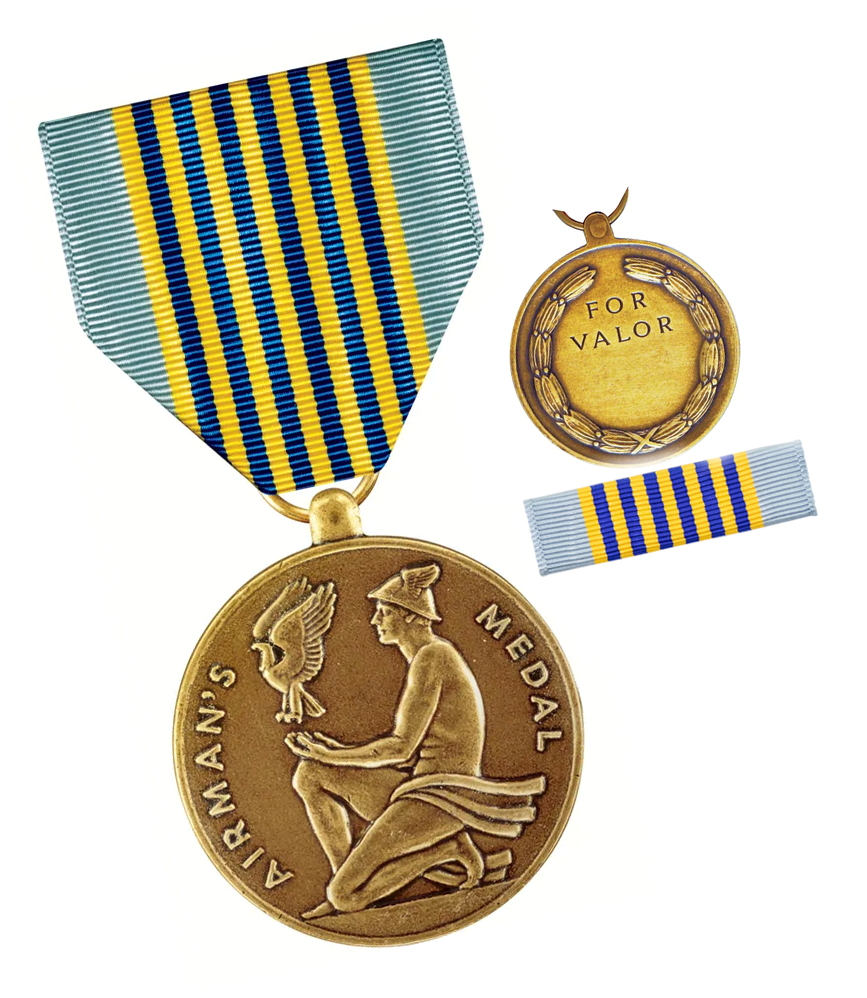
The most meaningful award throughout my career would be the Airman’s Medal. It was a surprise to be recognized for something directly related to my fire rescue training. Our rescue crew responded to an F-4 aircraft emergency. The aircraft was about five miles from Tan Son Nhut, and the pilot had bailed out. Flying with the Fire Suppression Kit (FSK), we observed the pilot on the ground near his chute. Our pilot using the aircraft PA system received a thumbs up that the pilot was ok. One firefighter SSgt Ermon Russell was dropped by hoist to the ground, and the second Rescue Helicopter picked SSgt Russell and the pilot up and transported him to the hospital for a check-up. Our aircraft continued to the location where the F-4 had crashed. The aircraft had impacted an Army Base Camp, destroying a large dormitory tent.
The medic continued on with our response in the event there were injuries on the ground. The crew dropped the FSK, the medic, and myself near the crash. I advanced the hose line into the dormitory fire area and soon realized I had no pressure or discharge of the agent. I looked back to the FSK and observed ten or more army troops pulling on the fire hose, and their effort separated the hose from the FSK. By this time, the fire was out. Afterward, it was determined there was one 750 lb bomb on the F-4 aircraft. We evacuated the area and requested the Explosive Ordnance Team be deployed. I returned to base and recovered the FSK the next day.
The crew members for this incident were nominated for various awards.
Which individual(s) from your time in the military stand out as having the most positive impact on you and why?

One of the people who had a lasting impact on me was TSgt Frank Cox, Fire Chief at Misawa AB, Japan. He selected me to serve as an Airborne Firefighter Rescue Specialist on the HH43b Firefighter Rescue Helicopter. Most of my achievements were related to my rescue experience. He also gave me advice on how to conduct myself when called to appear before an Aircraft Accident Investigating Board. As an A2C, I was the first firefighter to respond to an F-100 incident on the Bomb Range about 5 miles from Misawa. Frank also selected me to go to the shipping Port at Hachonie, Japan, along with three others to pick up two new P-2 Crash Fire Trucks and drive them back to Misawa, about a 12-mile trip through the small streets and communities. This further helped me establish confidence in my abilities to serve the Fire Service.
List the names of old friends you served with, at which locations, and recount what you remember most about them. Indicate those you are already in touch with and those you would like to make contact with.
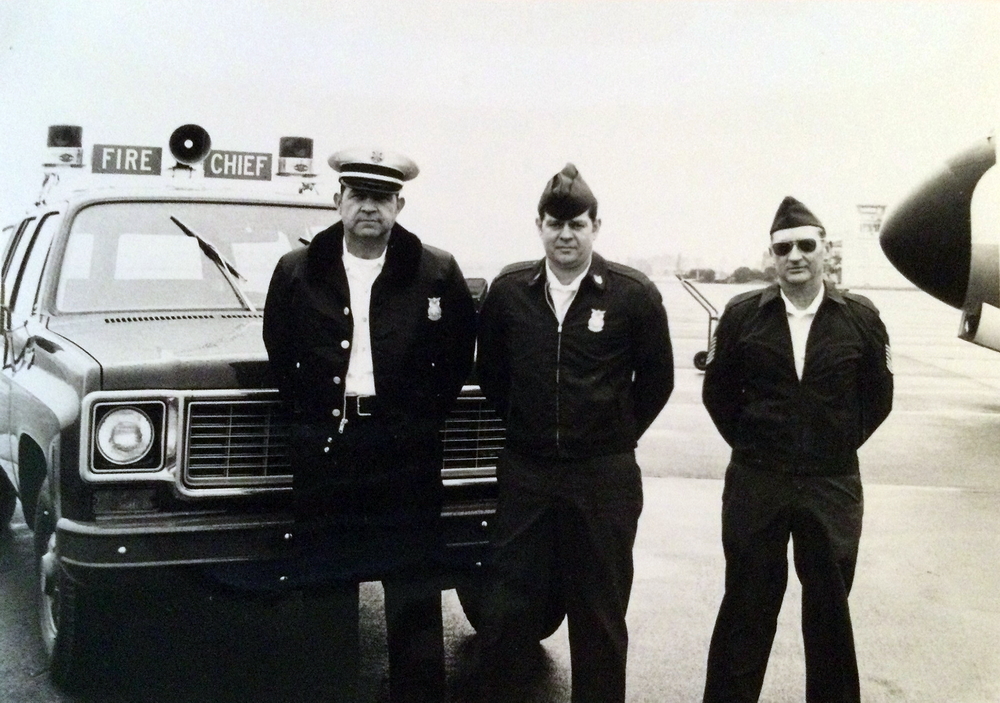
TSgt Frank Cox, Misawa AB, Japan Deceased TSgt Cox was the Fire Chief with about one hundred firefighters assigned. In that period, there was not much rank in the fire service. Most retired as A1C, E-4, and very few SSgt. Most promotions were made on the flight line with the aircraft maintainers. Cooks, Security Police, and Firefighters were way down the list for promotions. In 1971 the Air Force went to a Weighed Airman promotion system where all career fields were promoted equally in percentage. Chief Cox was instrumental in guiding me in my career and provided many opportunities during my assignment. He also advised me on my efforts to Marry a local National; We have been married for 54 years.
SSgt Dale Curtis, Misawa AB, Japan. Deceased SSgt Curtis administered my initial check ride and certification as an Airborne Rescue Specialist on the HH43B Firefighting Rescue Helicopter. We remained friends and stayed in contact until death in 2020.
SSgt James C. Travis, Misawa AB, Japan, SSgt Travis provided my training and evaluation on the HH43B and became my supervisor until I left Japan in 67.
A1C Joe Taylor, Misawa AB, Japan. I flew many alert shifts with him, and we maintained contact until he died at 93.
Sgt Larry Feltz (AKA) Jason Stone, Tucson, AZ, my friend from Misawa, and we transferred to Tan Son Nhut AB, RVN. I went to Tokyo on RR together, and Larry witnessed my marriage in the American Embassy in January 1968.
SSgt Jack Yates, Status Unknown, Colorado. My Firefighter friend stood alert with me many times in the Rescue Helicopter.
SSgt Kevin Morsey, Spangdahlem AB, Germany. A key supporter in my Operations section.
Can you recount a particular incident from your service, which may or may not have been funny at the time, but still makes you laugh?
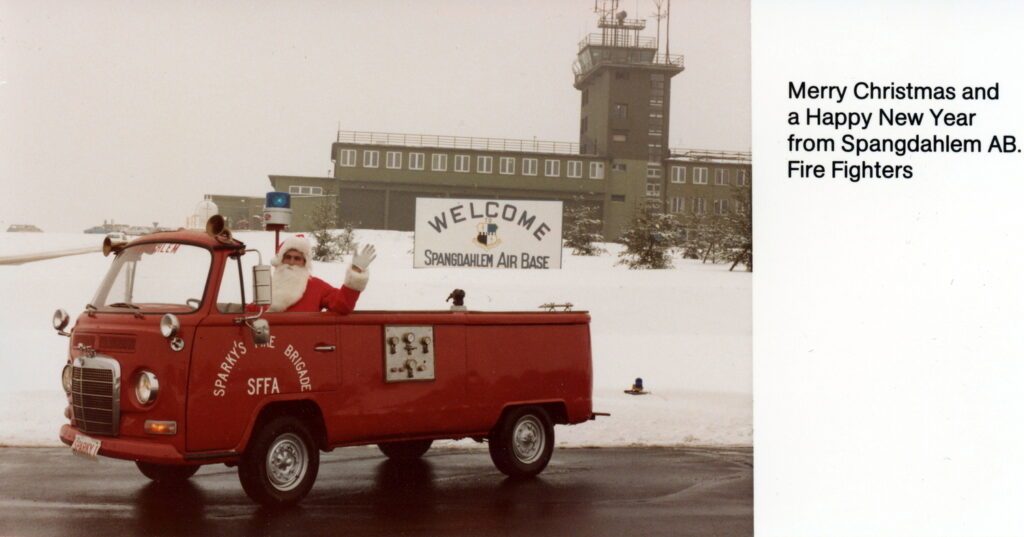
While assigned as the Fire Chief at Spangdahlem AB, Germany. My commander, Lt Col Robbins, notified me that I had a visitor on his way to my office and agreed with whatever he was requesting and that we would discuss it later. The Communication Commander arrived and asked that I give up space identified as our classroom and Fire Chief’s Office. We vacated two days later. AFM 88-15 Space Utilization/Assignment has not been updated since 1958. and there was no space identified to support a Training Officer or Classroom. Commander turned his head, and we completed a self-help project that provided improved space for our needs. Thanks to the German Firefighters. Mr. Peter Schend lead the effort. That added space is still utilized today. Manhours and cost are unknown. Before my PCS in June 87, a renovation project was underway, and the firefighters had been relocated to trailers near the station where the vehicles continued to be housed. Lt. Col Robbins directed this project to be accomplished, and I have no memory of the cost. I left before it was completed and never saw the completed project.
What profession did you follow after your military service, and what are you doing now? If you are currently serving, what is your present occupational specialty?
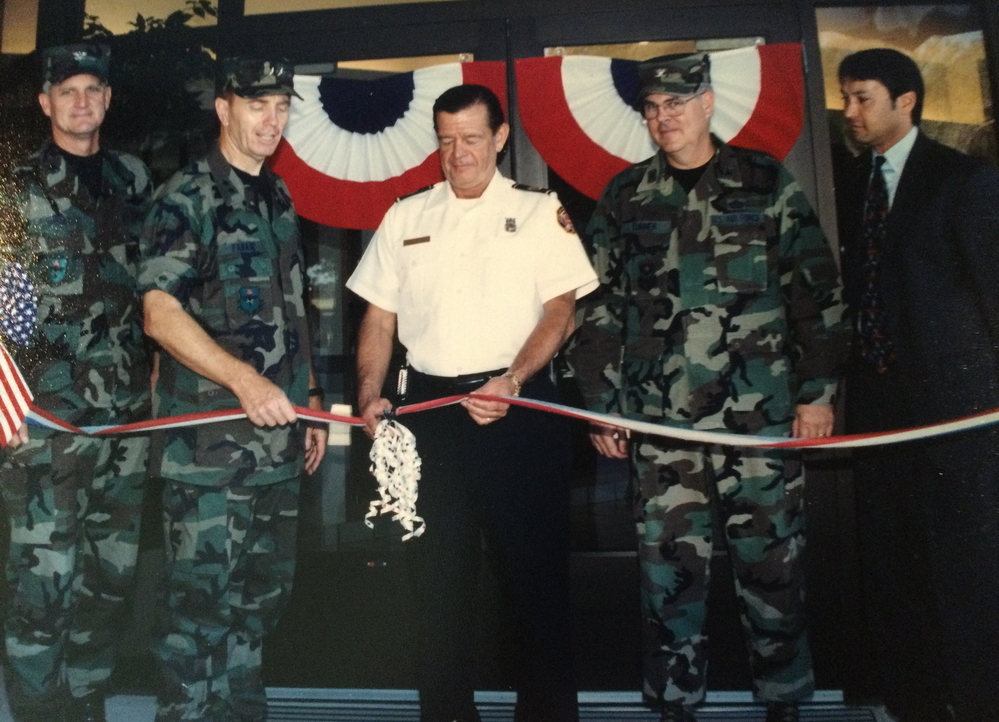
I worked as a Field Representative for the Texas Commission on Fire Protection for two years and then had the opportunity to serve as the Deputy Fire Chief at Kelly AFB, Texas, for five years. Improved the Firefighter Fitness Program, Coordinated Facility Board approval to assign bldg 1500 to the Fire Prevention Staff. They were previously located on the AF Reserve West Ramp. I had an economic cost analysis done to justify a new Consolidated Fire Station. The new station was sited, and all efforts were canceled once the Base Realignment and Closure Commission (BRAC) selected Kelly AFB for closure. I was chosen to serve as Fire Chief at Lackland AFB, where I oversaw the fire service program for the closure/realignment of Kelly. The proposed new consolidated fire station was constructed on the West side of the airfield at the cost of $4.3 Million. Fifty-seven firefighter positions were transferred from Kelly, and the new station was operational on 1 Oct 2000. The AF decision to transfer Brooks AFB to the City of San Antonio. The Firefighter Union was not notified of the impact on firefighters. To resolve this issue, it was decided that Lackland would give up the 12 military firefighters positions and coordinate twenty 20 Civil Service Firefighter Positions from Brooks AFB.
Coordinated with the 37th Civil Engineer Chief to design a project to add/alter the 1955-era Fire Station on Medina Annex. Sought and received year-end funding to award the project at the cost of $1.3 million.
I took a VW van and modified it into a miniature Fire Truck. Used in Fire Education Program at on Base School. Participated in the 4th of July Parade 2020 in the City of Schertz, Tx
What military associations are you a member of, if any? What specific benefits do you derive from your memberships?
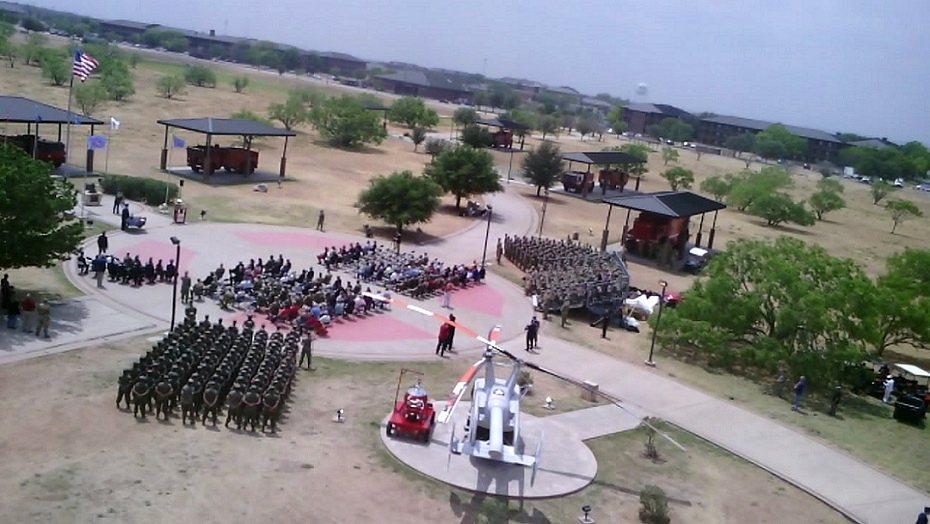
I am a member of the Pedro Rescue Helicopter Association. We have placed Monuments at Maxwell AFB, AL., the Air Force Academy, and Lackland AFB, Texas. We placed the last Monument at the Air Force Museum, Dayton, Ohio, in June 2022. Hopefully, it will help to keep the legacy of the Air Rescue Service alive.
I did the research for two years on an HH43B Rescue Helicopter Crash that occurred on 4 June 1969, and the incident resulted in the loss of eight lives, a crew of five, and three passengers. The research resulted in the names of three firefighters names being added to the Fallen Firefighter Wall at the Military Firefighter Heritage Foundation, Goodfellow AFB, San Angelo, Texas. Names were: SSgt Patrick J. Geisler, Sgt Jerry R. Evans, and A2C Craig A. Carver.
I have spent two years along with David Oakes, the former Pedro Airborne Firefighter. We coordinated the fabrication of a Fire Suppression Kit (FSK). The FSK was taken to Goodfellow AFB and Dedicated to all those who served on the HH43B Firefighting Rescue Helicopter. It will be placed on a static display alongside the HH43B Pedro. The Fire Suppression Mission was terminated by the Air Force on 1 May 1973, so hopefully, this display will keep the legacy of Pedro Firefighter alive in the future generation of firefighters that graduate from the DOD Fire School.
In what ways has serving in the military influenced the way you have approached your life and your career? What do you miss most about your time in the service?
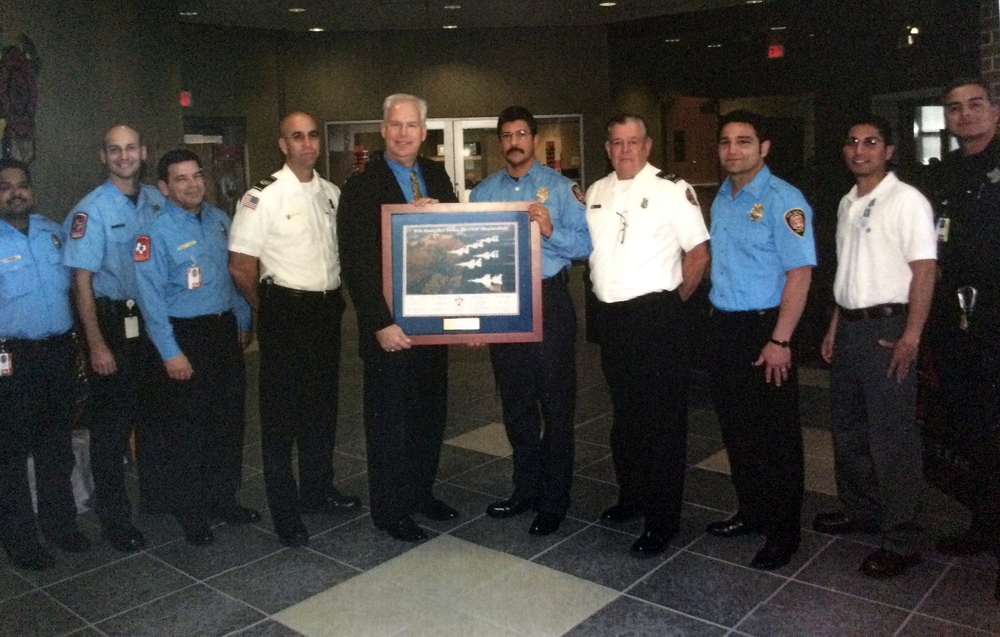
The many opportunities to expand my experience carried over to my retirement life. Meeting new people and keeping in contact with fellow firefighters from the past.
Based on your own experiences, what advice would you give to those who have recently joined the Air Force?
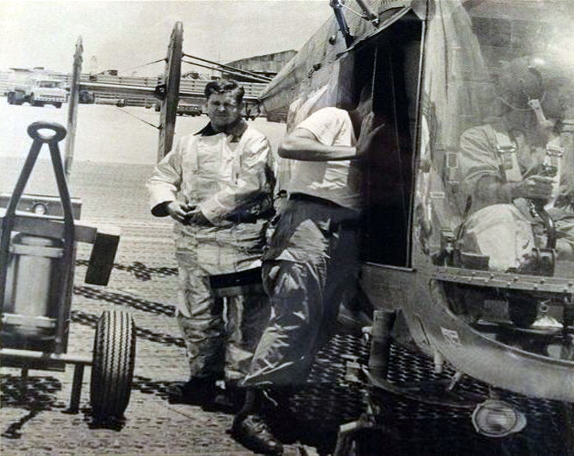
I have been retired for so long, and there have been many changes within the military and Air Force. I would recommend they research well and find a person who is currently serving and select wisely someone who enjoys their work and the profession.
In what ways has togetherweserved.com helped you remember your military service and the friends you served with.
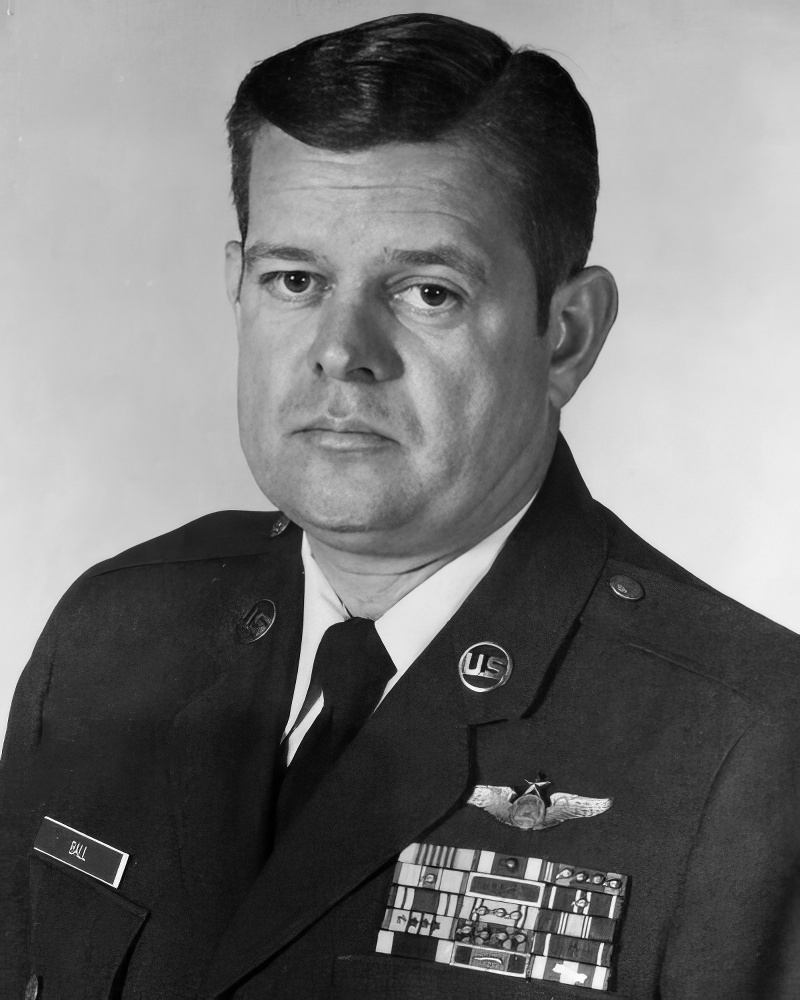
I was recently introduced to this site TogetherWeServed. Still trying to find my way around and have a lot to learn on how to take full advantage of all the options offered. Hope to make contact with others that I served with.
PRESERVE YOUR OWN SERVICE MEMORIES!
Boot Camp, Units, Combat Operations
Join Togetherweserved.com to Create a Legacy of Your Service
U.S. Marine Corps, U.S. Navy, U.S. Air Force, U.S. Army, U.S. Coast Guard
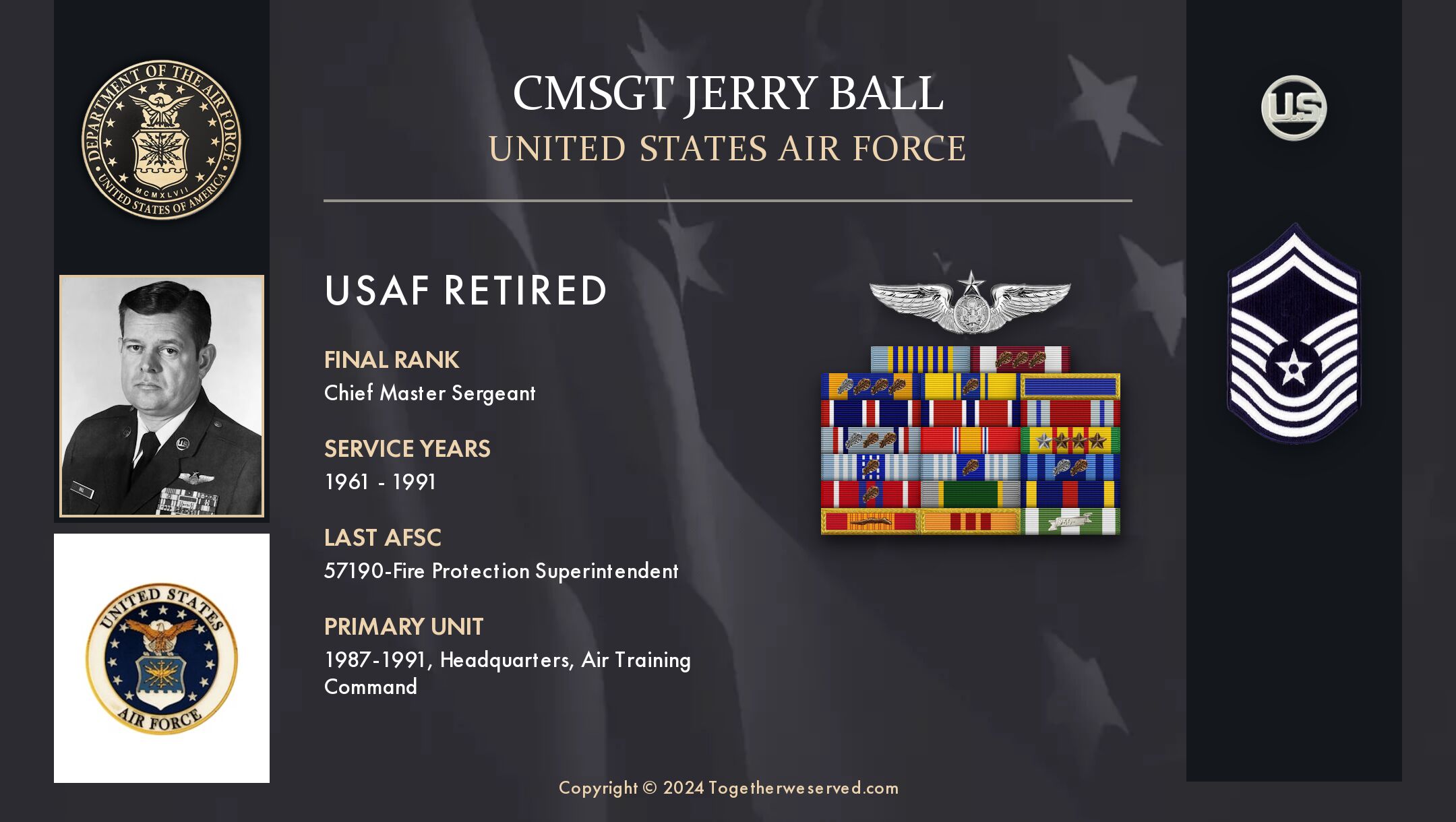
chief ball it would be a blessing to contact you.thanks for the plaque.
Chief Ball, you were my fire chief for my first two years in Germany.83-85. I remember you well.
I was stationed with Jerry Ball at Highlands 646 Radar site in 61. I have been trying to find him for a long time. I hope he,sees this and we can make contact